“To know our story, we have to go back to when Austin was 15 months old. He had a freak accident and landed on his head. He cracked his skull and got a hematoma. I rode with him in the ambulance to the hospital. It felt like we were moving in slow motion. I was not there when it happened so I was still trying to process it. That was the longest ride of my life. I just kept praying to God.
We got to the hospital and the staff was amazing and quick to respond. He got a CAT scan, and I remember standing in that small room watching through blinds with my husband. We just held hands. I remember a lot of waiting that day.
We were in the hospital for a few days and then got sent home. Austin then started having seizures, so back to the hospital we went. It was the same doctor in the PICU who was there the day we first arrived. He remembered every single detail, and picked up from where we left off at the hospital. It turns out the blood in Austin’s head wasn’t draining like it should have been, so he got a VP shunt placed in his brain. We were in the hospital for about a week that time. About a month later, he developed acquired hydrocephalous, and it turns out that his shunt was malfunctioning. He had a revision surgery, and we were only there a few days that time. I should also mention that we took Austin to his pediatrician both of those times for the seizures that were misdiagnosed, and the hydrocephalous, which we were told was just some fluid drainage from a little viral infection. With all things considered, we got a new pediatrician.
There are a lot more details to all of the hospital visits, but I will spare you. It is also still hard for me to talk about everything, and it’s been almost four years. Every time I see an ambulance, I always think about that day.
For the first few months after the surgery, my husband and I were on high alert for every little thing. We got Austin enrolled in therapy services: Speech, Occupational, and Physical. He received it from our Children’s Hospital, where he had to relearn some things. He did well and was discharged from Speech first, and then was discharged from physical therapy. We knew we would have to begin paying for every therapy service, which was something completely out of our price range. Because of this, we turned to an alternative and got him enrolled in ECI services. He continued with those services until he aged out at three years old, where then he started Pre-K in a Special Ed program.
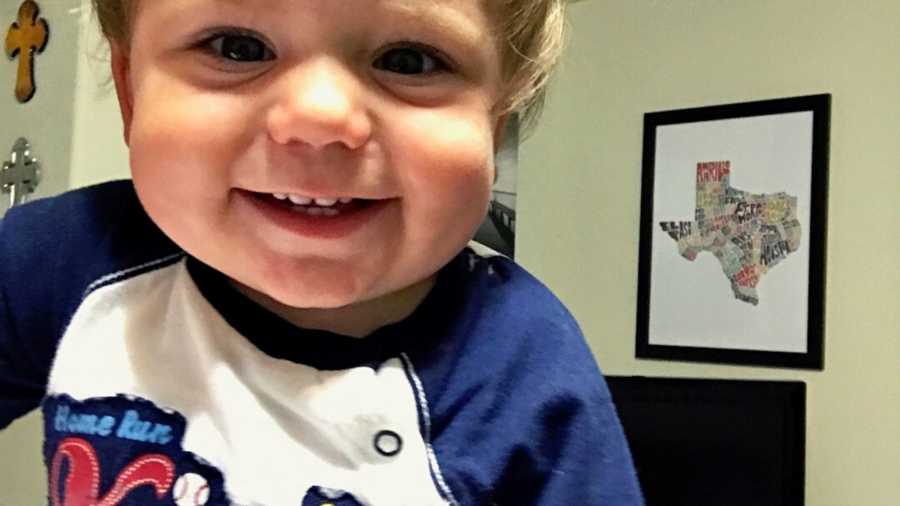
We started to think that his shunt was malfunctioning all of the time. We went back to the hospital a lot for MRIs, but were always sent back home.
He was getting better in some areas, but not so much in others. The thought of Autism started to creep into my head. He showed some hallmark signs: he walked on his toes a lot, he stimmed, his speech had regressed, he was particular about his food and the textures of it, he banged his head on the floor a lot, he didn’t want to play with other kids his age, and there was a lot of screaming. He despised loud noises and could not handle the Birthday Song being sung around him.
Austin sees a neurosurgeon yearly and a neurologist every six months. It was January 2020, and Austin was three years old. We were at an appointment with his neurologist. When the neurologist walked into the room, Austin did not acknowledge him. He did not answer any of his questions. He did not make eye contact. The neurologist went through a list of questions with my husband and myself. For the first time, I was to say what my son could and could not do out loud. Little did we know that the neurologist’s response would change our lives forever.
’I’m diagnosing him with Autism Spectrum Disorder,’ said the neurologist.
It felt like an out of body experience. I heard the words, but it felt like I was watching myself from up above in the room. The next few days, I went through the motions as it sank in. I know that some parents talk about feeling sad and/or grieve a bit. But I didn’t. I honestly felt relieved. We had an answer. We knew that his shunt could not be malfunctioning all of the time. I knew how to help my son. I work in the mental health field, so I knew the services that he would need. I got him on the waitlist for services within two days of him being diagnosed.
The day that he was diagnosed, the neurologist ordered blood to be drawn for genetic testing. We learned that Austin has the genetic disorder 16p 11.2 deletion syndrome.
We modified Austin’s IEP at school a bit. He receives Speech and OT through his school, and he has thrived since receiving his diagnosis. Austin is four years old now, and he will be five in September. He went from saying no words, to saying over 100. He is starting to put 2-3 words in a sentence and ask for things. He still needs a lot of assistance with his ADL’s, and we are still working on potty training, but that will all come with time.
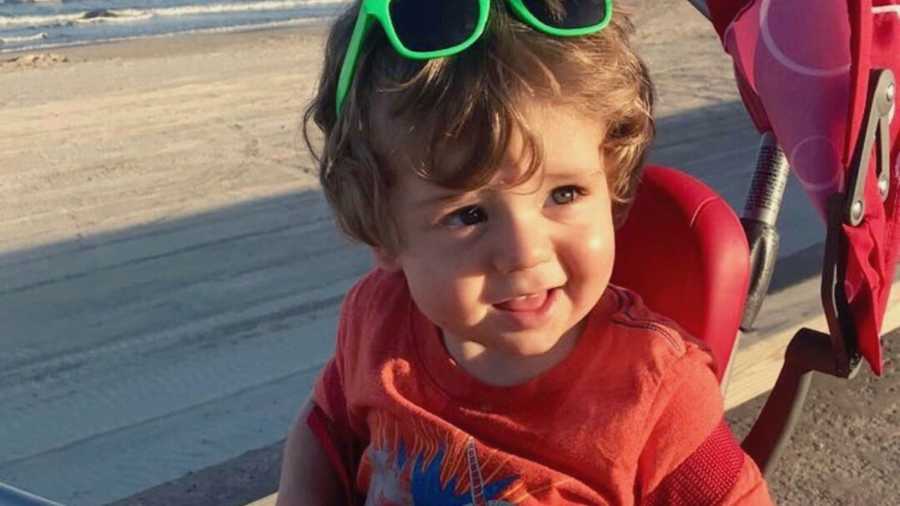
Austin is one of the happiest kids that I know. His smile lights up any room. He never gives up on something that he wants to do. He is the best big brother to our two-year-old neurotypical son. They are best friends. We were worried that they wouldn’t have a bond. When we first brought home our youngest, Austin really wanted nothing to do with him. But over time, they have developed a strong bond. He loves his family big.
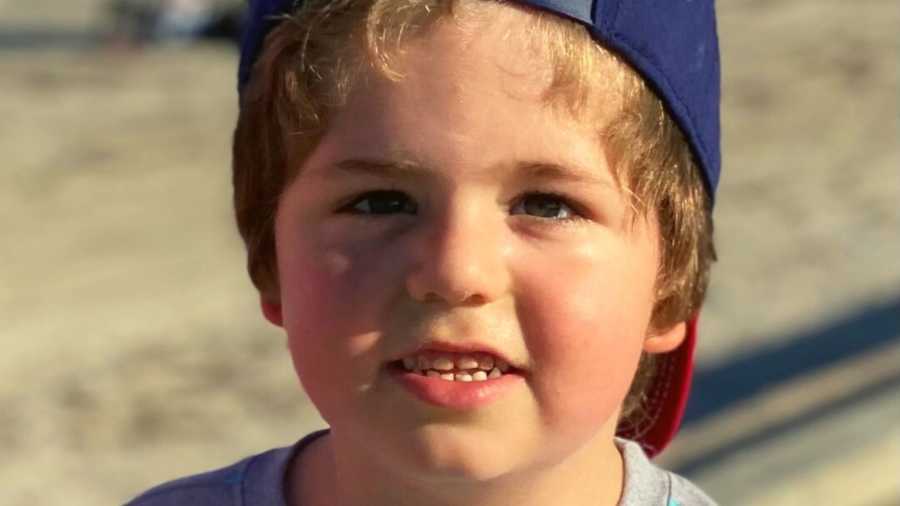
Austin still walks on his toes. He stims. I call them his ‘happy flaps.’ He uses silverware now to eat, maybe not the whole meal at times, but that is ok. He is sleeping better. The boy loves him some fruit, but vegetables, not so much. He is still picky with some of his food textures, but we continue to offer them to him. He still isn’t a big fan of the Birthday Song.
When Austin was diagnosed, I jumped onto Instagram and looked for other parents of Autistic children, and little to my surprise, I found a great group of moms. I have a wonderful support system and an amazing family that would do anything and everything for Austin, but it was nice to make friends with others moms that just ‘got it’. I didn’t have to explain why Austin did or didn’t do something. I would just have to say one word, and the head nodding to signify they knew what I was about to say. I developed some beautiful friendships with some really great women. It saved me. It has been a big help and a true blessing.
Austin’s diagnosis of Autism Spectrum Disorder did not change who he is as a person. It only helped us know how to help him. Austin is still the same boy that we took into that room in the neurologist office. We raise him the same way that we do with our other son, just modified in ways that he understands. Austin is one of the best things that has ever happened to us. He makes me a better person.
I could get sad and depressed that he is almost five years old and has never had a full conversation with me. I could get sad that there are some things that his little brother can do that he cannot. I could get sad when I think about the possibility of his future. But I choose not to do that. What good is that going to do? I choose to be positive. Don’t get me wrong, I do worry about when the ‘cute’ phase stops and when the quiet comments and staring starts. But thinking too much about that won’t do good for anyone.
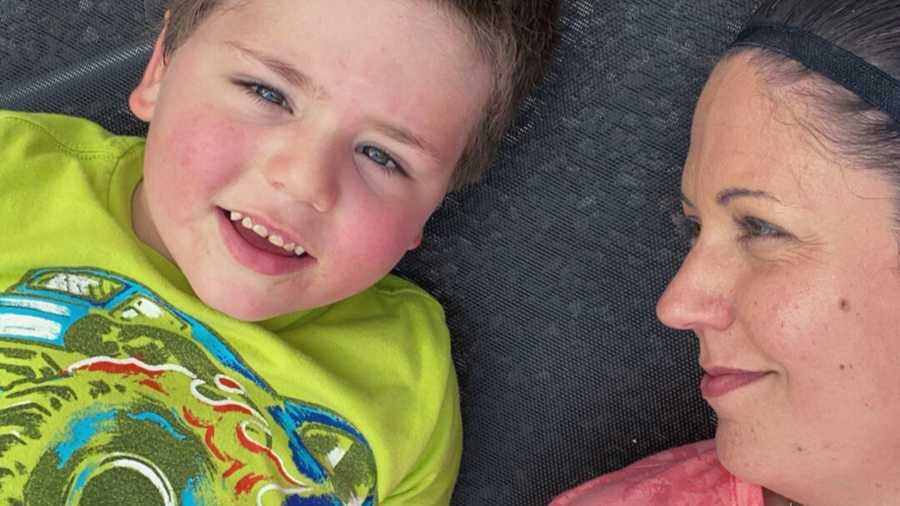
I share about our daily life on Instagram. The good and the bad. It helps a lot. I will never show my child having a meltdown or a bad day, but I might talk about it at the end of the day. I always choose to talk and show my son in the most positive light because that is how I want the world to see him. If I only show what he cannot do, then that is all the world will see.
Austin is amazing. He is so strong willed and determined. He is hilarious. He is loving and empathetic. He may not be able to say ‘I love you’, but he knows how to show it. He wants to learn. He is a helper. As we say, ‘Austin is Austin’. We celebrate everything about him. We don’t teach him to hide his autistic traits.
For other parents at the beginning of their journey with Autism, know that it is not the end of the world. Your child is still the same child, there is just a diagnosis added. If all you focus on is the Autism, then you will miss so much. I would also encourage parents to find a good support system of people that understand the process and know what you are going through. It is beneficial and makes so much of a difference. You cannot go through this journey alone.
It has been two years since Austin’s last shunt revision. In total, he has had the initial placement surgery and three shunt revisions. He has also had a spinal tap. It has been over two years since he has had a seizure. I still go on high alert when he starts to show signs and symptoms of a shunt malfunction, but I am not as intense about it.
Austin has come so far in a year and a half. We are all looking forward to how much he will continue to shine.”
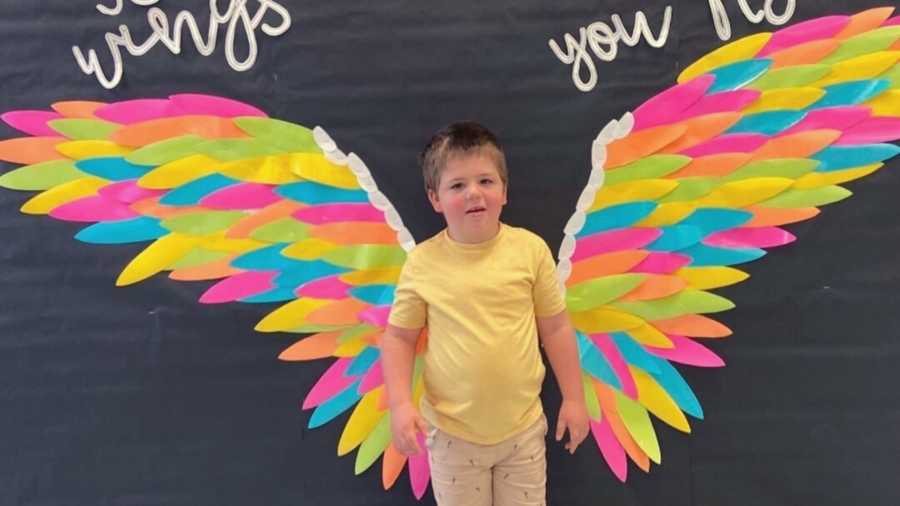
This story was submitted to Love What Matters by Amber Brown of Texas. You can follow her journey on Instagram. Submit your own story here and be sure to subscribe to our free email newsletter for our best stories, and our Youtube for our best videos.
Read more inspiring stories like this:
Do you know someone who could benefit from this story? SHARE this story on Facebook to let others know a community of support is available.




